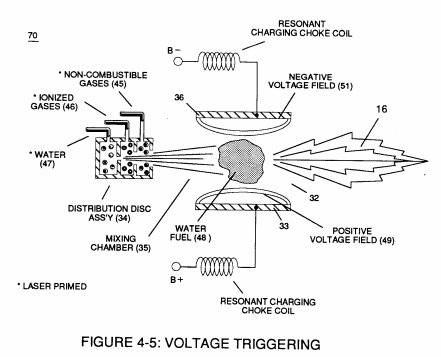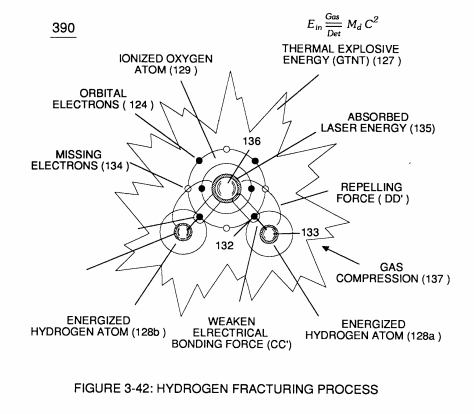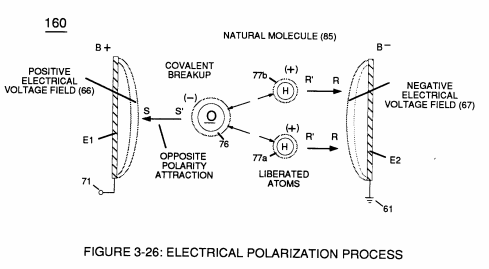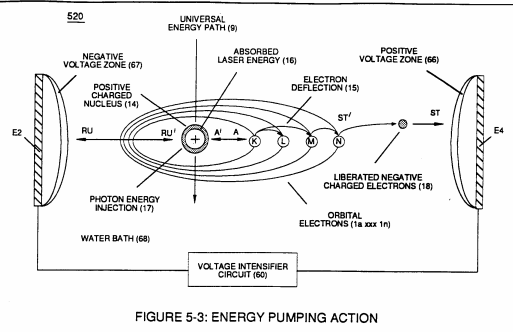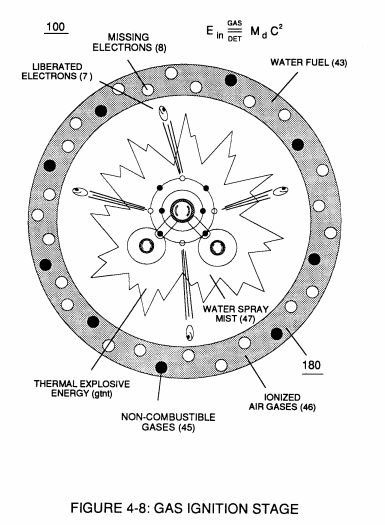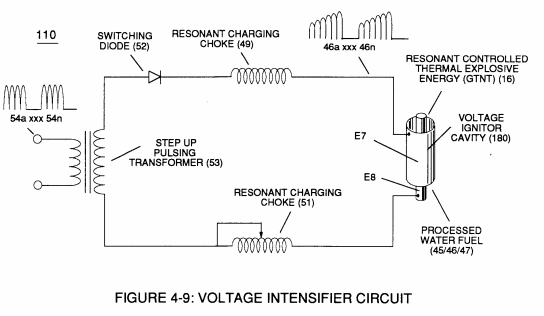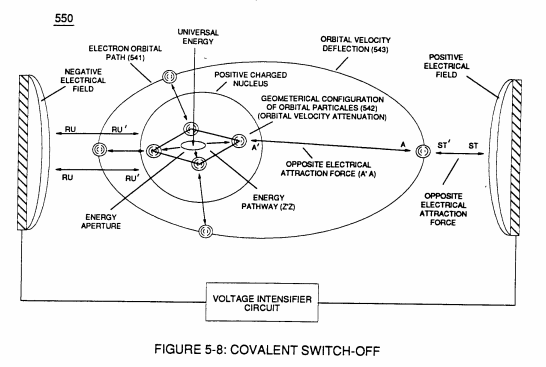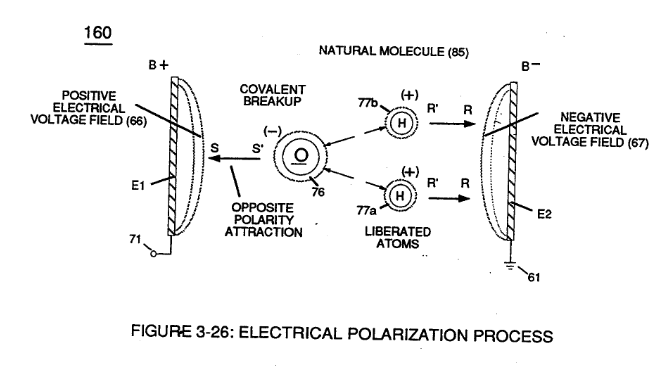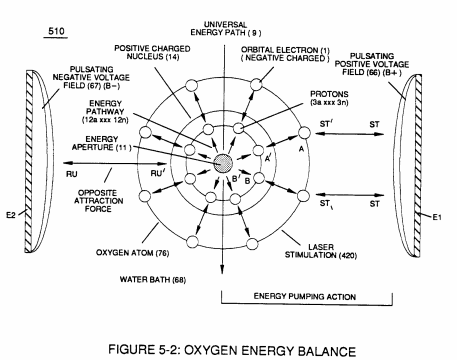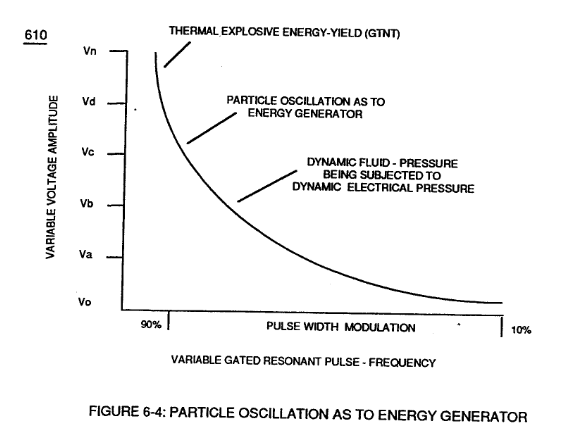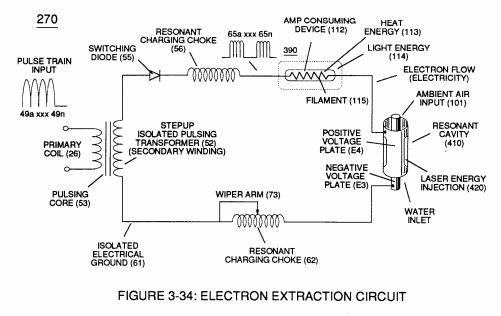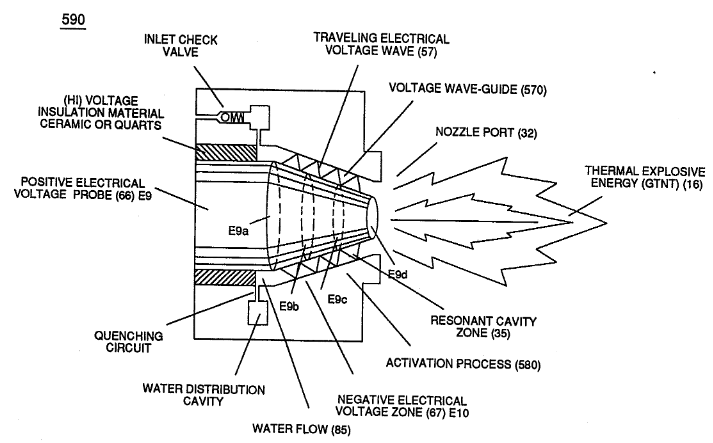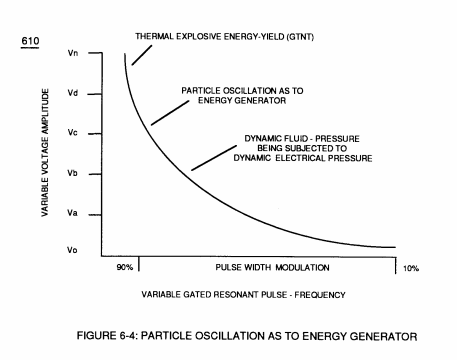In Application of Usage
The Hydrogen Fracturing Process (390) of Figure (3-42) simply triggers and releases atomic energy (gtnt) from natural water (85) of Figure (3-26) by retarding and preventing the reformation of the water molecule being subjected to sub-critical state (520) of Figure (5-3) during thermal gas ignition (100) of Figure (4-8) as to (70) of Figure (4-5).
|
(390) of Figure (3-42) |
(85) of Figure (3-26) |
|
(520) of Figure (5-3) |
(100) of Figure (4-8) |
The Voltage Intensifier Circuit (110) of Figure (4-9) brings on the "Electrical Polarization Process" (160) of Figure (3-26) that switches off the covalent bond (550) of Figure (5-8) of the water molecule without amp influxing.
|
(110) of Figure (4-9) |
(550) of Figure (5-8) |
(160) of Figure (3-26)
Energy Pumping Action (500) of Figure (5-1) as to (510) of Figure (5-2) undergoing "Resonant Propagation" of opposite electrical stress (ST-ST'/RU-RU') oscillates the "Energy Aperture" (7a -- 7n ) of the combustible gas atoms to increase the atomic energy level (see graph 610 of Figure 6-4) of the combustible gas atoms prior to gas ignition.
|
(500) of Figure (5-1) |
(510) of Figure (5-2) |
|
610 of Figure 6-4 |
The Electron Extraction Process (230) of Figure (3-30) as to (270) of (3-34) ionizes the highly energized combustible gases to decrease atomic mass while applied traveling voltage wave-form (57) of Figure (6-2) of opposite electrical polarity (E9-66/ ElO-67) initiates the voltage-triggering process (600) of Figure (6-3) once maximum voltage deflection (VO - Va - Vb - Vc - Vn) of Figure (6-4) is achieved at Activation-Point (E9d) of Figure (6-2) ... releasing thermal Explosive Energy (gtnt) from the atomic level of the water molecule.
|
(230) of Figure (3-30)
|
(270) of (3-34) |
|
(57) of Figure (6-2) |
Figure (6-4) |
The energy contained in a gallon. of water exceeds 2.5 million barrels of oil when equated in terms of atomic energy. Water, of course, is free, abundant and energy-recyclable.

